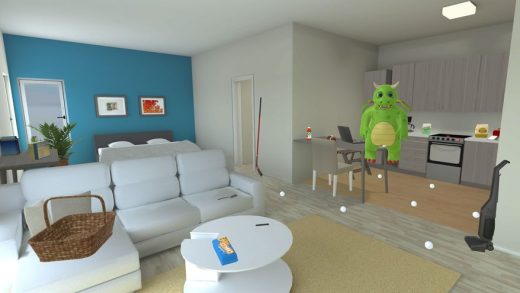:format(webp)/https://www.thestar.com/content/dam/thestar/entertainment/visualarts/2023/06/02/jnsi-and-the-volcano/jonsi_in_hrafntinna.jpg)
When Jón Þór Birgisson — better known as Jónsi to fans of Icelandic post-rockers Sigur Rós — missed the eruption of Fagradalsfjall, a volcano about an hour’s drive from Reykjavik that enjoyed a reported 6,000 years of dormancy before 2021, he decided to do something about it.
“It was in the middle of COVID, so we couldn’t get home,” the Los Angeles-based Jónsi said in a recent interview at the Art Gallery of Ontario.
“So this is just my idea of what it would be like inside an active volcano: sounds, smells and stuff like that.”
The “this” is Jónsi’s powerful multi-sensory installation piece “Hrafntinna (Obsidian),” which began its run at the gallery back in July 2022 and concludes on Aug. 7 — a week before Sigur Rós arrives at Roy Thomson Hall on Aug. 14 for a sold-out performance with the 41-piece Wordless Music Orchestra and a new album, “Ætta,” in tow.
“This is my interpretation of that scenery,” Jónsi explained. “Because I never witnessed an eruption before.”
The dimly lit walk-in exhibit consists of a spatial surround-sound experience that involves 195 directional speakers and a large, cylindrical seat that numerous visitors can sit — or lie back — on to feel the rumblings quaking from a subwoofer bass speaker seemingly placed under the surface of the seat.
No molten lava here, folks, although visitor ears are serenaded by the Jónsi’s angelic, wordless counter-tenor falsetto, as well as music and nature sounds extracted from his accompanying 2021 solo album, “Obsidian,” occasional flashes of light and the scent of 35-million-year-old fossilized amber.
There’s also a fair amount of silence; “Hrafntinna (Obsidian)” runs for 25 minutes before the presentation is repeated.
Those who follow Jónsi’s career know him through his eight studio albums over 28 years as singer and bowed guitarist for Sigur Rós; his three solo albums; his projects with Alex Somers (“Riceboy Sleeps”) and his score for the 2011 Cameron Crowe film “We Bought A Zoo.”
But since 2019, Jónsi has also been gathering praise for his art-world installations in New York, Seattle and, of course, Toronto’s AGO, which has purchased “Hrafntinna (Obsidian)” for its collection and promises to show it again in the future.
An artist who also dabbles in perfumery, Jónsi, 48, has incorporated everything from sex toys to household mould (“horrible smell, but the shapes and colours are beautiful,” he told a crowd at the AGO the next night) to realize his visions. But “Hrafntinna (Obsidian)” was an “impractical” setup, he said, that has pushed him to create more manageable displays.
“This is a nightmare to move around,” he said in an interview. “ The speakers are f–king heavy. But I love sound and this being placed 360 degrees around you and spatial sound, I want to do more like that.
“It’s all there bubbling around in my brain. I have friends in L.A. who build, so that’s incredibly helpful.”
For the singing he does for the installation, no one will need a lyric sheet. Jónsi described the syllables as “nonsense.”
“I think it’s always the best for singers when you’re doing melodies, writing songs, playing piano or guitar while singing, is to sing it in some nonsense language,” he said.
“It’s amazing that people listen to singers spouting Icelandic nonsense. People make up their own story or lyrics or interpretation of what the song is about or its meaning. That’s really amazing,” he said.
The band (currently a trio that includes bass player Georg “Goggi” Hólm and keyboardist Kjartan “Kjarri” Sveinsson following drummer Orri Páll Dýrason’s 2018 departure due to sexual assault accusations) is about to release “Ætta” — its first original studio album since 2013’s “Kveikur” — at the same time it welcomes Sveinsson back into the fold following his departure almost a decade ago.
Jónsi said Sveinsson provided the spark that got them back into the studio after their lengthy hiatus.
“He came out and we said, ‘Let’s jam a little bit and see what happens.’ Then he did a little more and Goggi came, and we all liked it and it was fun.”
Jónsi described the new album as offering minimal drum work and sounding “pretty sparse,” and he will head to London soon to commence rehearsals with the orchestra, which will also incorporate songs from Sigur Rós classics like “Agætis byrjun,” “( )” and “Inni.”
“The orchestral thing is kind of exciting,” he said. “We’ve never done that with Sigur Rós.”
Despite his gift for visual excellence, Jónsi said making music never prompts pictorial imagery for him; nor do he and the band members talk to each other much during the creative process.
“I usually start creating music and it comes easy and naturally to me, although words are really difficult for me,” he told the AGO crowd. “They seem really naked and intense. Being in a band is all about flow and not much talking.
“Before, we couldn’t talk about the music and we couldn’t talk about the process because we came together to play music. We rarely spoke, because if something is working it’s working and we all feel it.”
But Jónsi said he’s changing some of his ways. Whereas his soundtrack, up until this point, had largely consisted of “crackling fireplaces and chirping birds” so as not to interfere with his creative thoughts, he’s more open to listening to new music “to see what’s out there.”
“Now I realize it’s healthy to listen to new music,” he said.
And he’s still loving his life in L.A., where he relocated nearly a decade ago.
“When I started to go to L.A. for a lot of movie stuff and TV stuff, I thought, ‘It’s pretty nice here: good weather; good food’ — especially if you’re a vegetarian, it’s great!
“When you go to Iceland, it’s the exact opposite: it’s kind of cold, miserable, depressing and dark. L.A. is really sunny and boring, but in a good way. I had never lived anywhere else in my life, so it was good to go there.
“The biggest adjustment is being away from your parents, your family, your sisters and your friends. I also didn’t have my dog for a long time, but now I’m finally reunited with him. It was mainly just being alone, which was kind of great in a way. You’re not surrounded by anyone and kind of alone with your thoughts.”
Obviously, location has inspired him in part to pursue life as a provocative visual artist. Aside from “Hrafntinna (Obsidian),” Jónsi has an exhibit at Seattle’s National Nordic Museum that runs until July 2, called “FLÓD (Flood).”
The subject of that exhibit is a little more disturbing.
“It’s about the big wave that’s going to come and kill us all,” the affable Jónsi said with a smile.
JOIN THE CONVERSATION
does not endorse these opinions.


